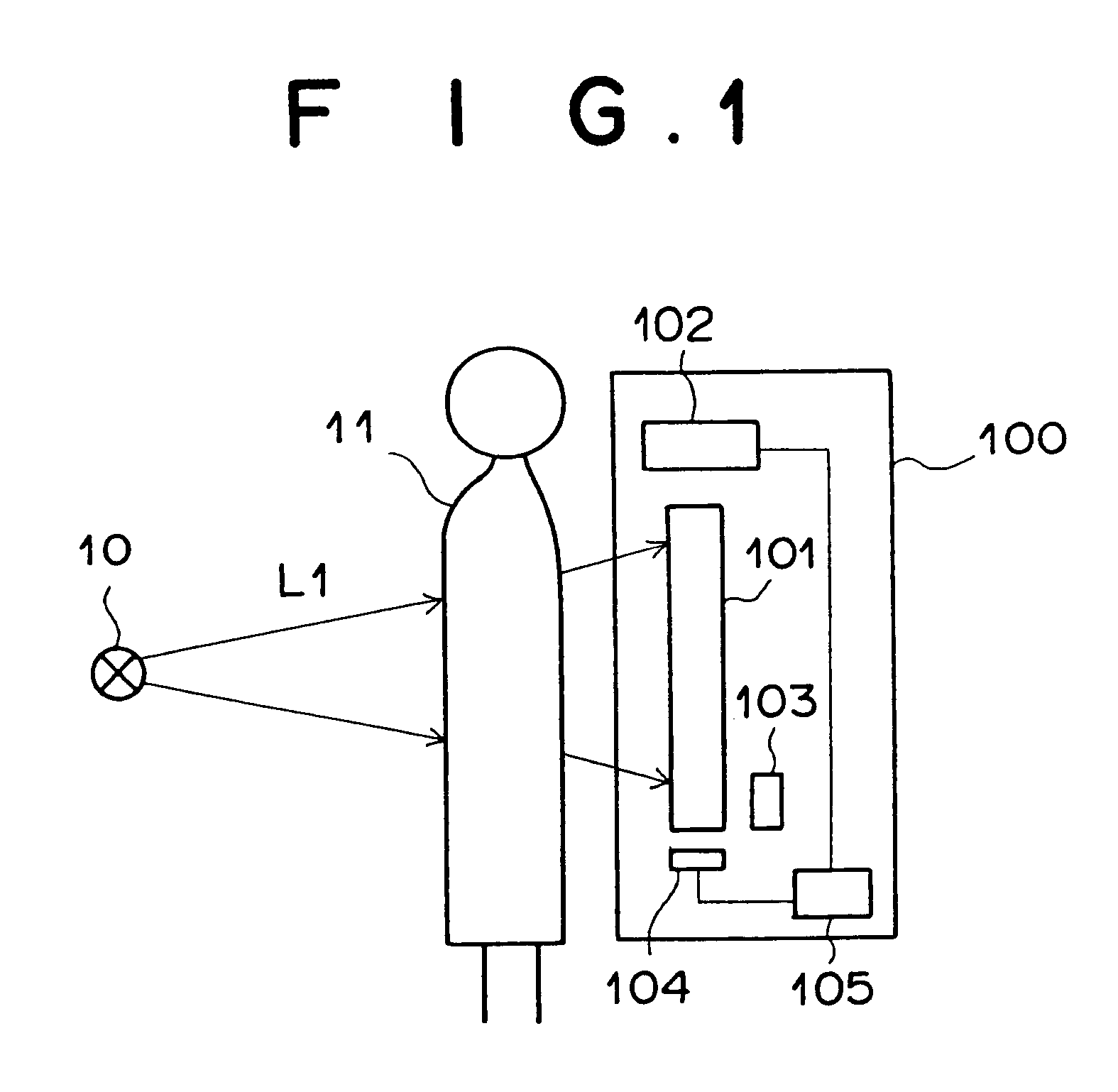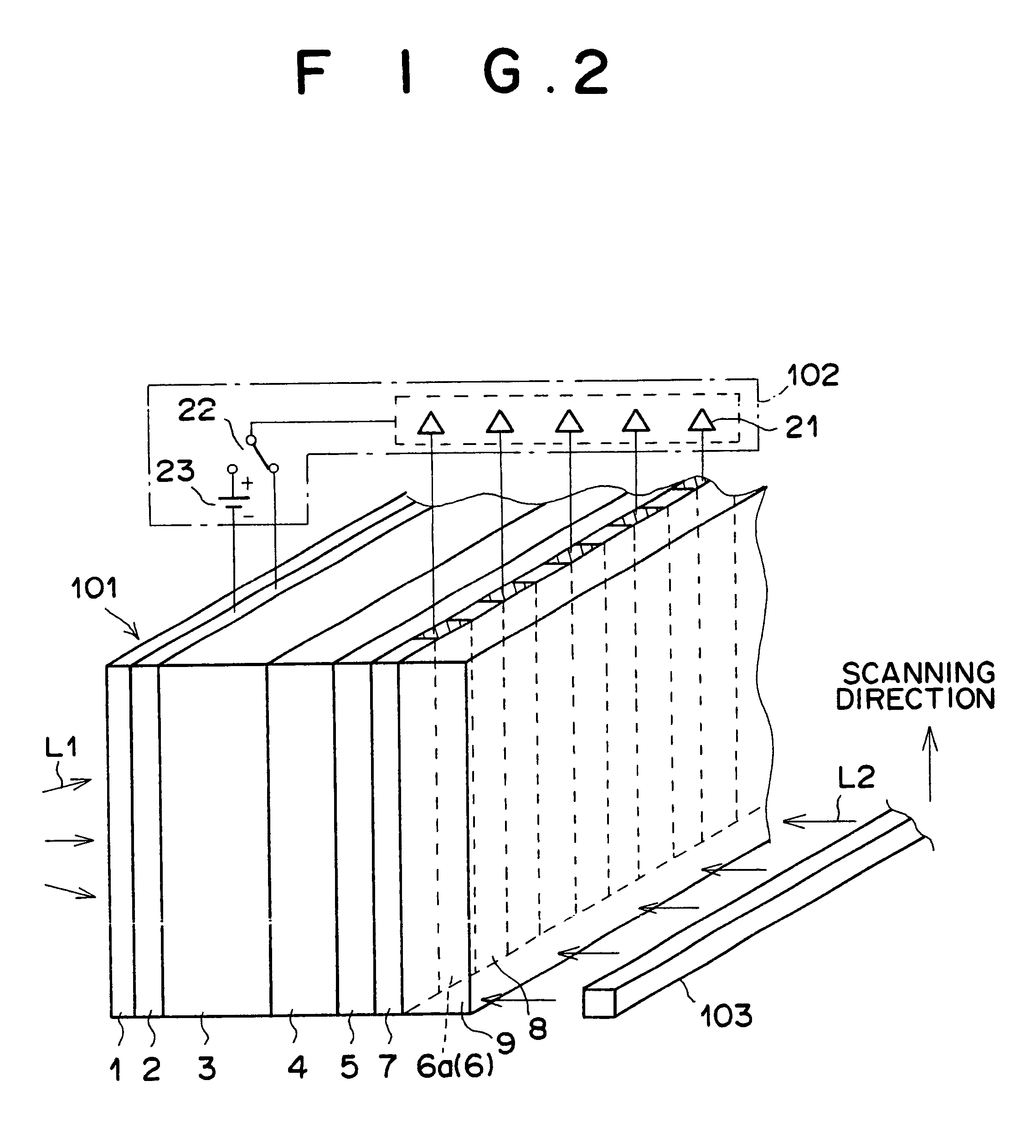Energetic-beam detection apparatus including temperature-controlled selenium detector
a technology of energy beam and detection apparatus, which is applied in the direction of conversion screen, radio frequency control device, instruments, etc., can solve the problems of increasing the complexity of the manufacturing process and the manufacturing cost, deteriorating the characteristics of the photoconductive layer during the photoetching process, and inability to withstand such a high temperatur
- Summary
- Abstract
- Description
- Claims
- Application Information
AI Technical Summary
Benefits of technology
Problems solved by technology
Method used
Image
Examples
first embodiment
FIG. 1 is a diagram illustrating an outline of a radiographic-image pickup-and-readout system using an energetic-beam detection apparatus as the first embodiment of the present invention. The radiographic-image pickup and readout system of FIG. 1 comprises a radiation source 10 and a pickup-and-readout apparatus 100 as the energetic-beam detection apparatus. The pickup-and-readout apparatus 100 comprises a solid-state radiation detector 101, a current detection unit 102, an LED array 103, a thermistor 104, and a operation suppressing unit 105. The solid-state radiation detector 101 is a flat-panel type selenium detector. The current detection unit 102 reads out image information from the solid-state radiation detector 101 as a current value. The LED array 103 scans the solid-state radiation detector 101 with reading light for exposing the solid-state radiation detector 101 to the reading light. The thermistor 104 detects the temperature of the solid-state radiation detector 101.
FIG....
second embodiment
FIG. 3 is a diagram illustrating an outline of a radiographic-image pickup-and-readout system using an energetic-beam detection apparatus as the second embodiment of the present invention. In FIG. 3, elements having the same reference numbers as FIG. 1 have the same functions as the corresponding elements in FIG. 1, and the detailed explanations of the same elements as FIG. 1 are not repeated.
The radiographic-image pickup and readout system of FIG. 3 comprises a radiation source 10 and a pickup-and-readout apparatus 200 as the above energetic-beam detection apparatus. The pickup-and-readout apparatus 200 comprises a solid-state radiation detector 101, a current detection unit 102, an LED array 103, a thermistor 104, a notification control unit 201, and an alarm unit 202. The solid-state radiation detector 101 is a flat-panel type selenium detector. The current detection unit 102 reads out image information from the solid-state radiation detector 101 as a current value. The LED array...
third embodiment
FIG. 4 is a diagram illustrating an outline of a radiographic-image pickup-and-readout system using an energetic-beam detection apparatus as the third embodiment of the present invention. In FIG. 4, elements having the same reference numbers as FIG. 1 have the same functions as the corresponding elements in FIG. 1, and the detailed explanations of the same elements as FIG. 1 are not repeated.
The radiographic-image pickup and readout system of FIG. 4 comprises a radiation source 10 and a pickup-and-readout apparatus 300 as the above energetic-beam detection apparatus. The pickup-and-readout apparatus 300 comprises a solid-state radiation detector 101, a current detection unit 102, an LED array 103, a thermistor 104, a temperature control unit 301, a heater 302, and a fan 303. The solid-state radiation detector 101 is a flat-panel type selenium detector. The current detection unit 102 reads out image information from the solid-state radiation detector 101 as a current value. The LED a...
PUM
 Login to View More
Login to View More Abstract
Description
Claims
Application Information
 Login to View More
Login to View More - R&D
- Intellectual Property
- Life Sciences
- Materials
- Tech Scout
- Unparalleled Data Quality
- Higher Quality Content
- 60% Fewer Hallucinations
Browse by: Latest US Patents, China's latest patents, Technical Efficacy Thesaurus, Application Domain, Technology Topic, Popular Technical Reports.
© 2025 PatSnap. All rights reserved.Legal|Privacy policy|Modern Slavery Act Transparency Statement|Sitemap|About US| Contact US: help@patsnap.com



